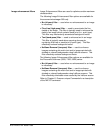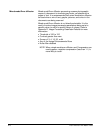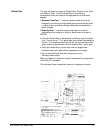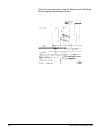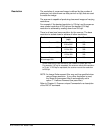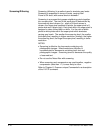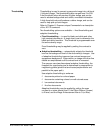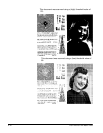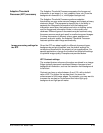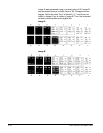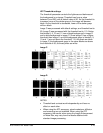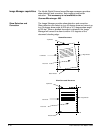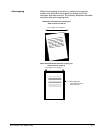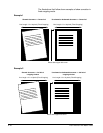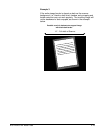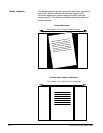
A-61122/A-61124 March 1999 E-13
Adaptive Threshold
Processor (ATP) accessory
The Adaptive Threshold Processor separates the foreground
information in an image (i.e., text, graphics, lines, etc.) from the
background information (i.e., white paper background).
The Adaptive Threshold Processor performs adaptive
thresholding on gray scale scanned images and outputs a binary
electronic image. The processor's strength lies in its ability to
separate the foreground information from the background
information even when the background color or shading varies,
and the foreground information varies in color quality and
darkness. Different types of documents may be scanned using
the same scanner mode and result in excellent scanned images.
If mixing documents of different colors, paper qualities and
textures, and print quality, the Adaptive Threshold Processor
features optimize each image automatically.
Image processing settings for
the ATP
Since the ATP can adapt readily to different document types,
backgrounds and print qualities, use the default settings for
contrast and threshold for the majority of your applications. For
special applications, change the contrast and threshold settings
to optimize image quality. Examples are provided below.
ATP Contrast settings
The contrast feature enhances the edges contained in an image.
Edges typically represent transitions between foreground and
background information, such as the transition from background
to faint text.
Contrast can have a value between 0 and 100, with a default
value of 62. The higher the contrast level, the more the
enhancement of the image edges. For example, you may want to
increase the contrast on a document that has a light gray
background and light pencil marks.



